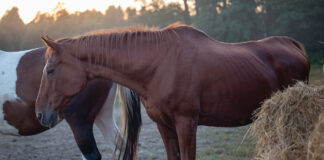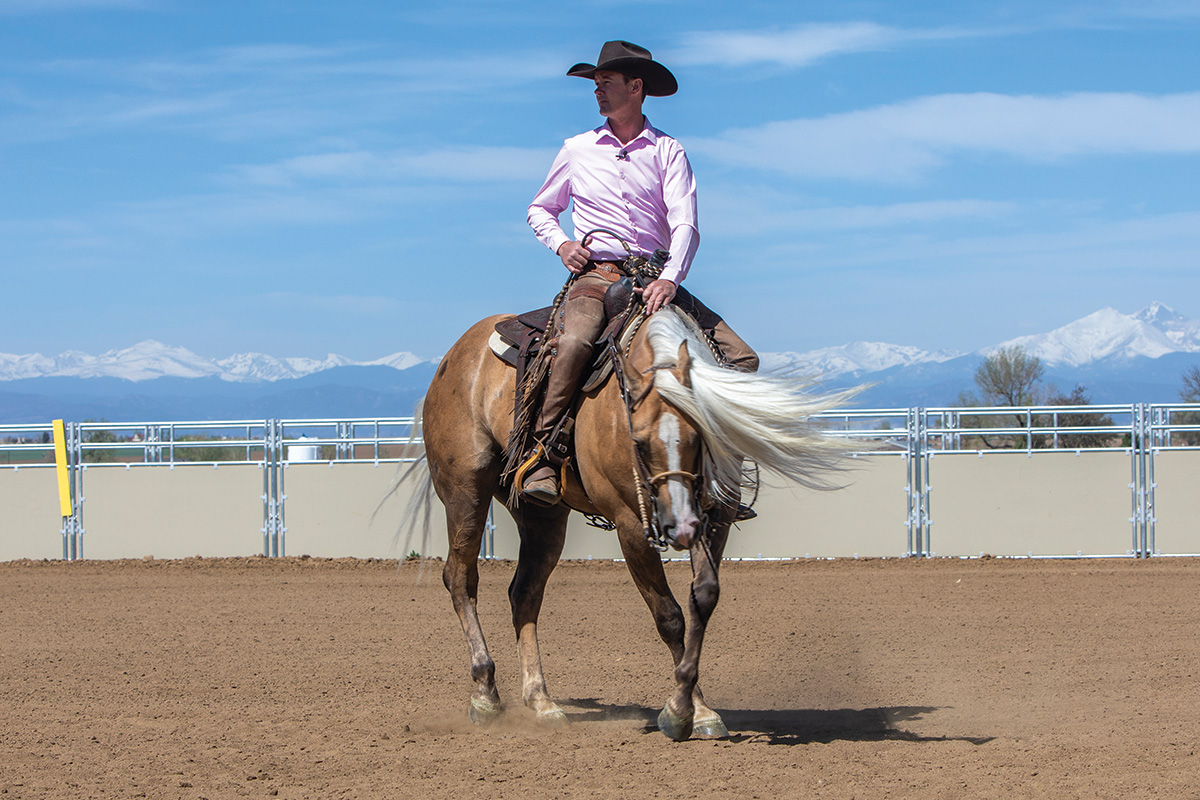
The spin is the maneuver specific to reining. The stylized movement shows your horse’s willingness to move on cue with speed and agility. It’s also the move most associated with riders’ concerns. Will I stop on time? Will I get too dizzy? Will I lose count?
In a reined cow horse competition, you’ll need to do two-and-a-half to three-and-a-half spins. Whether you’re preparing for a reining event or working cow horse, the move is the same.
Crow describes how he prepares for turnarounds (also called spins) in a reining show.
“I let my horse get settled, I take a breath, make sure my horse’s head and neck are straight, then I’ll open my inside leg, look in the direction of the spin and lay my rein on the horse’s neck. That starts the spin and my count. I count out loud as I go, saying the number as soon as I start that revolution.”
With practice and patience, the spin can look smooth and effortless. But that doesn’t mean it starts off that way for every rider.
“A lot of riders panic when they get to the spin,” says Crow. “They run down and think that the horse immediately has to step into the spin. Instead, let your horse settle. Count to five and allow your horse to pause, then spin on your cue. The judge will appreciate that your horse is relaxed and settled. That sets the tone and builds eye appeal before you even start the maneuver.”
Perfect Start
Crow suggests breathing and taking your time.
“Many riders forget that horses have to have time to get balanced. You have to be patient and allow your horse to transition from standing straight and square to rocking back and moving his shoulders laterally in the spin. He has to have a few steps to figure out where his feet are before maintaining a consistent turnaround with some speed.”
Once you stop your horse from the previous maneuver and allow him to stand still, it’s time to find your landmark to help you count your rotations. You’ll pick a spot to look at so you know where to ask your horse to stop at the end of the spins. The spot you’ll choose to look at depends on your horse and how you learn to practice at home.
Start the spin by squaring your shoulders and facing the same direction as your horse. Make sure his head and neck are in a straight line, and take time to correct his nose if needed by picking up and directing his nose.
Then your horse should keep spinning once cued and until you tell him to whoa.
“When I’m ready to turn, I move my chin and rotate my shoulders just slightly into the turn,” says Crow. “Then I rotate my shoulders slightly in the direction of the turn, which also rotates my pelvis. That helps my inside leg open and closes my outside leg and thigh against the horse. I will point my inside toe toward the direction we’re going. That reminds me to open up my leg.”
Count it Out
Counting your spins is crucial to knowing when to stop. The “shut-off,” as Crow calls it, is important because you don’t want a penalty.
“If you over- or under-spin by a quarter, it’s a one-point deduction,” he says. “If you spin much more than is requested, it’s considered being off pattern. You don’t want to lose out because you haven’t practiced counting or planned how to stop.”
Crow says some riders have different counting methods, but his pattern is consistent and helps him keep his spot—even if the horse falters.
“I start by counting out loud as soon as I start spinning,” he says. “Then as I finish that first revolution, I say ‘two’ and continue counting out loud. Only when I finish that revolution will I say the next number. Some riders will count the revolution then say the number, but if your horse sidesteps or stumbles, it’s easy to lose count. If you have the number three in your mind, you may forget if you are on three or just finished three. However you choose to count, keep it consistent.”
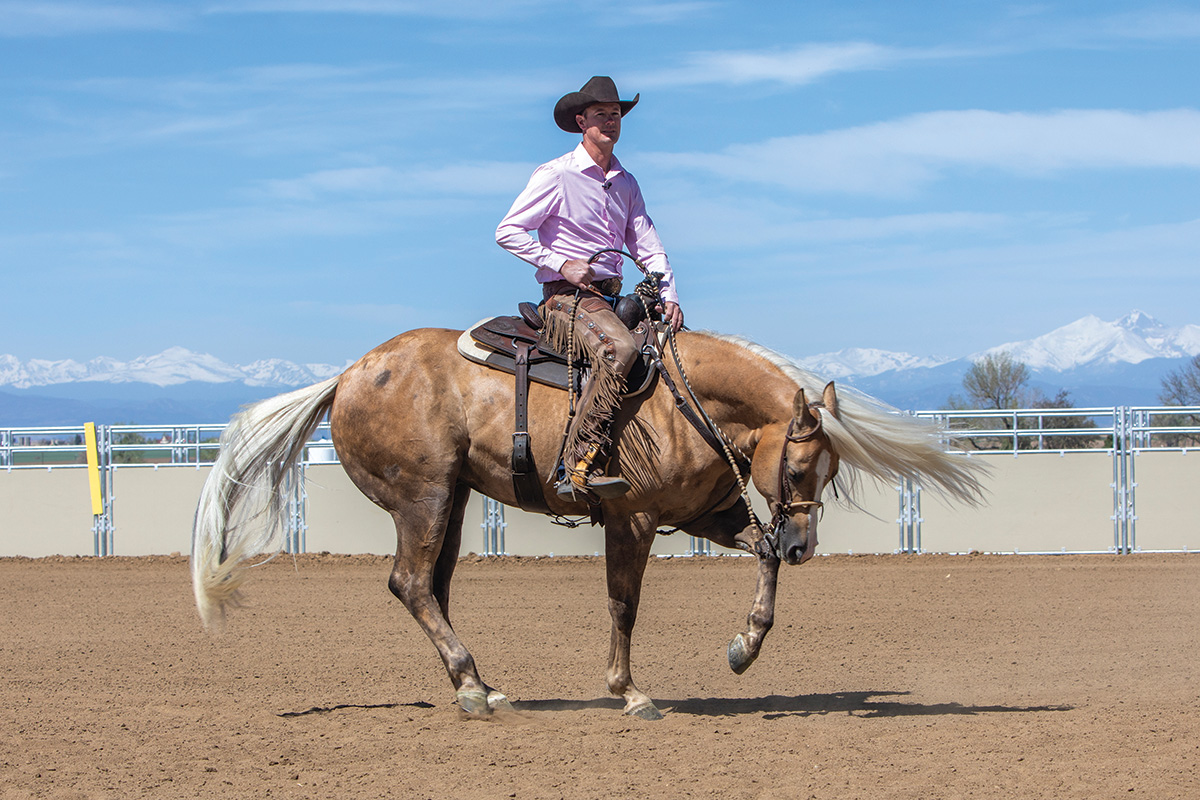
Once the horse is moving, he should maintain the speed you request and keep going steadily through all the spins. If a judge sees a horse start slowly, build up, then slow down and anticipate a stop, that spin won’t score well.
The Finish
Crow says every horse has a little different timing in the shut-off.
“When I’ve finished my four revolutions but need to do another quarter, I say whoa and pick my hand straight up. In that time, the horse will take another quarter-turn step. I shut off my horse at the four mark, and by the time he can actually stop, he is at the four-and-a-quarter mark—just as we want. As I finish the fourth spin, I know I need to look at the center marker of the arena. I make sure to look up at the marker I need. I look in the direction of the spin, but up above the horse so I’m not looking at the ground. If I look at the ground, I’ll get dizzy.”
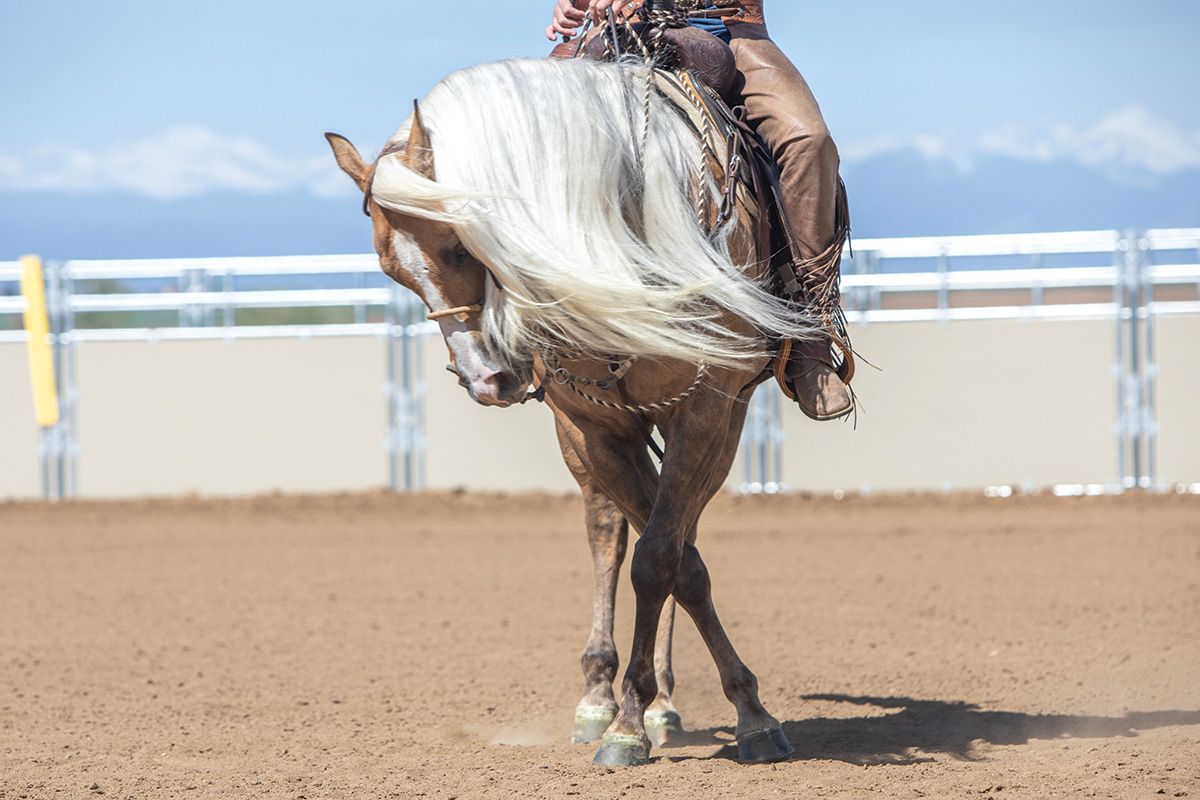
When it comes to knowing where to stop, Crow says some horses will stop their spin as soon as you pick up your hand. Other horses will need a few steps to stop completely. You’ll need to practice this at home to find out where your horse needs to get the cue so that he’ll consistently shut off at the point where you need it.
“When I ask a horse to stop, I move my legs off and lift my reining hand up and say ‘whoa,’” says Crow. “If I have a horse that is a little sloppy, I will say ‘whoa,’ then may use my inside leg to support that horse in the stop.”
Reining Spin Practice Tips
Crow says that most horses don’t get dizzy after turning just four times. He has found that horses get dizzy if you practice too many spins in one direction during practice at home. How do you avoid this? Don’t require your horses to spin his best during every practice. Keep your horse relaxed.
Crow recommends practicing at home with half the speed your horse could go. You’ll keep your horse turning on your cue and keep a consistent pace until the cue to stop. If you don’t cluck or kiss to your horse to ask for more speed, he should just go in a nice slow speed.
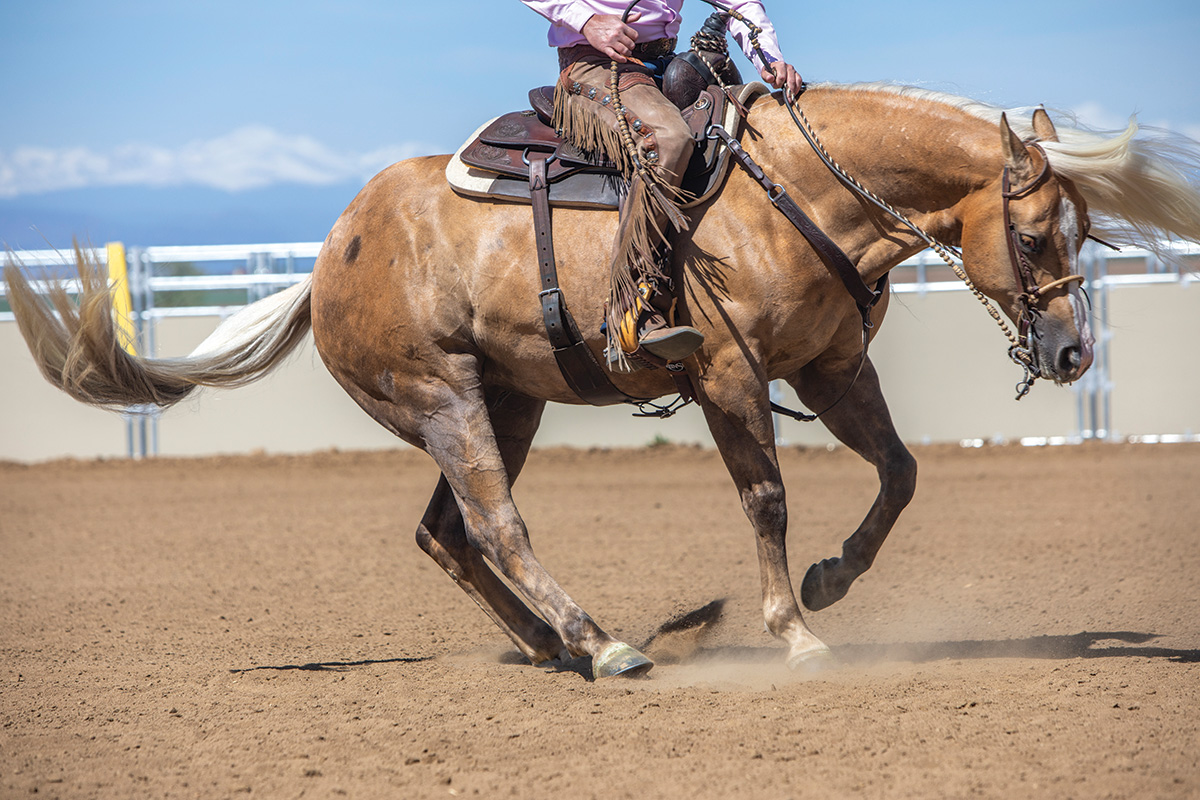
When it’s closer to a show and you want to practice just as you’ll perform at a show, kiss or cluck and ask for the show speed. Remember, once you cue your horse to spin, he should stay in the turnaround until you tell him to whoa.
When working with students, Crow has his riders practice their cues, then work on the horse’s performance.
“I want to know that the rider can count correctly and get the correct number of spins for the show. Once I know that the rider is trained, I also want to make sure the horse is ready and doesn’t learn to anticipate. I’ll mix up the number of spins we do. I don’t want my riders to constantly spin four times. I don’t want the horses to anticipate and shut off at four. Instead, I like riders to practice spinning six revolutions. That’s just enough to not get dizzy while keeping them from anticipating and learning to stop the spin too soon.”
Leg GearAt a show, you’ll want to outfit your horse with polo wraps or sport boots when he is traveling at his highest speeds. Here’s when to use equine leg protection: Reining Classes: Many competitors choose splint boots for the front legs and skid boots on the hind legs to help protect horses moving at high speeds. Working Cow Horse Classes: Polo wraps are the legwear of choice for riders comfortable with applying them correctly. Other horses wear sports medicine boots. At Home: Know your horse and how fast you’ll go. For our photoshoot, Crow didn’t ask Doc to move at performance speeds and kept his legs bare as is customary when practicing for other ranch-riding events. |
Meet the TrainerCody Crow owns and operates No Where But Up Performance Horses with his team of trainers in Johnstown, Colo. He trains horses and riders to compete in versatility ranch horse, ranch riding, ranch trail, and reined cow horse competitions. He has earned world and reserve world championships and helped his horses earn titles in American Quarter Horse Association, American Paint Horse Association, Appaloosa Horse Club, National Reined Cow Horse Association, and National Snaffle Bit Association events. |




